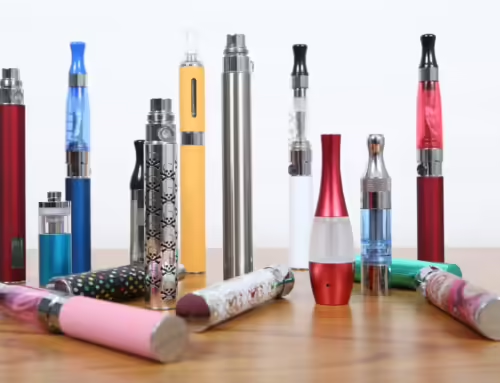Limiting the availability of products like tobacco helps protect those most vulnerable and improves the health of all. Here are some key considerations for implementing a comprehensive tobacco control program.
Tobacco prevention and control work is a key part of public health. We know that tobacco use is the single most preventable cause of disease, disability and death in the U.S. Use of tobacco and nicotine products can be harmful to health and a persons’ well-being. Limiting the availability of products, like tobacco, that can harm and kill is of upmost importance in sustaining our communities, protecting those most vulnerable, increasing the health of all, and improving public health as a whole.
This is where a comprehensive tobacco control program can come in. A program such as this combines the efforts of many in reducing tobacco use, sustaining protections for people against tobacco-related harms, and reducing the burden of tobacco-related disease and death. In order for a program to be effective, there has to be input and involvement from different people, sectors, and actors at the state, local, organizational, and federal level. It is also important to have enough funding and long-term investment in these programs for the highest impact and sustainability.
CDC guidelines for tobacco control programs
The CDC in their 2014 “Best Practices for Comprehensive Tobacco Control Programs” talks about an integrative approach using different strategies around smoke-free policies, establishing social norms, promoting and assisting tobacco users to quit, and preventing initiation of tobacco use.
 The CDC outlines the main components of a comprehensive program to include,
The CDC outlines the main components of a comprehensive program to include,
- State and community interventions
- Mass-reach health communication interventions
- Cessation interventions
- Surveillance and evaluation
- Infrastructure, administration, and management
The CDC defines a set of goals of a comprehensive program:
- Prevent initiation among youth and young adults
- Promote quitting among adults and youth
- Eliminate exposure to secondhand smoke
- Identify and eliminate tobacco-related disparities among population groups
In keeping the above in mind and breaking down the word “comprehensive”, we can specifically look at the four areas of point-of-sale (POS), smoke-free places/clean air, cessation, and behavioral & mental health. These areas can sometimes be siloed and treated separately. People working under these areas may not always continue to talk, join with one another, and see the direct linkage in their efforts. However, these areas all highly intersect and relate to one another. Things are most effective and synergistic when everyone is working together and there are combined efforts across these areas, which can lead to a more comprehensive tobacco control program.
The “Tobacco Control Vaccine” – an evidence-based approach
In recently published research titled, “Boosting the Tobacco Control Vaccine: recognizing the role of the retail environment in addressing tobacco use and disparities,” what works in tobacco prevention and control is explained through the visual of a “tobacco control vaccine.” Thinking of vaccines is very fitting for the time we live in today with COVID-19 vaccinations being given across the globe. What is known about vaccines? Well, they are engineered to have the highest effectiveness and reach, and they work. When putting things in a tobacco context, this “tobacco control vaccine” includes the aspects of tobacco price increases, cessation access, smoke-free policies and hard hitting media campaigns.
Even further, many times boosters are needed to a vaccine to increase its effectiveness and longevity. Now, per this research, there is a booster to this vaccine in the form of strategies focused on the retail environment, or POS. Interventions and policies, such as retailer licensing, flavored product bans, and Tobacco 21, can be implemented around tobacco product access, marketing and availability in the retail environment and are a complement and energizer to the other parts of the vaccine. All five of these vaccine elements are evidence-based and have been proven to work.
Visuals like this really show the importance of having a comprehensive and combination approach to tobacco control programming and efforts. In the same way that a real vaccine combines different components to target a pathogen, a comprehensive tobacco control program can create protections and increase immunity against the harms of tobacco and nicotine use at the societal and individual level.

For more on this research paper, check out our recent podcast where we interview one of the authors of the paper, Dr. Amanda Kong.
Context to consider in tobacco control programming
Let’s talk about a situational example to put things into perspective. So, Jim is a smoker and wants to quit, but has not been successful in quitting yet. In this example, there is a domino effect and a cycle that can continue to occur, if all aspects of Jim’s tobacco use is not addressed. What is leading to his behaviors has to be looked into. This can include understanding the neighborhood where he lives (like the availability of smoke-free housing/places), what the stores he visits are advertising and selling (the POS), the availability and effectiveness of cessation resources (like a Quitline), and sociodemographic factors (such as income). As seen, a lot can go into Jim’s smoking habits and ability to quit.
We can also think of youth, who may have never started to vape, who now do so because of factors like stress, boredom, and peer influence. We can think of those with behavioral health conditions, whom may turn to smoking for relief. There are far many other examples and situations that can be thought of. Thus, it is important to focus on all the aspects of a person’s environment, what they have access to/not, and what factors define who they are.
Program evaluation and improvement
 A comprehensive tobacco control program can help create a structure in that people, like Jim, are able to make better choices and communities can grow in a healthier way. Those reading this are implored to think about starting a tobacco control program, if one does not exist where you are. If one is already established, this is the time to think about and re-evaluate how comprehensive your tobacco control program is, what parts of your program could be “boosted,” and make sure all the actors across the different areas of POS, smoke-free places/clean air, cessation, and behavioral & mental health are always working in tandem.
A comprehensive tobacco control program can help create a structure in that people, like Jim, are able to make better choices and communities can grow in a healthier way. Those reading this are implored to think about starting a tobacco control program, if one does not exist where you are. If one is already established, this is the time to think about and re-evaluate how comprehensive your tobacco control program is, what parts of your program could be “boosted,” and make sure all the actors across the different areas of POS, smoke-free places/clean air, cessation, and behavioral & mental health are always working in tandem.
Creating partnerships with outside organizations working in these areas is also key. When thinking back to the “tobacco control vaccine,” these organizations could include the Campaign for Tobacco-Free Kids for taxing/pricing policymaking, Americans for Nonsmokers’ Rights for clean air/smoke-free initiatives, the North American Quitline Consortium for cessation access, the Truth Initiative for media campaigning, and us here at Counter Tools for retail environment/POS-related interventions.
With the combined efforts of our tobacco control programs across the nation, we can really curb the effect of tobacco use, dependance and harms, and aim towards a tobacco-free generation. In this new year, let’s work to re-evaluate and strengthen our programs for long-term success and for the greatest population impact!





